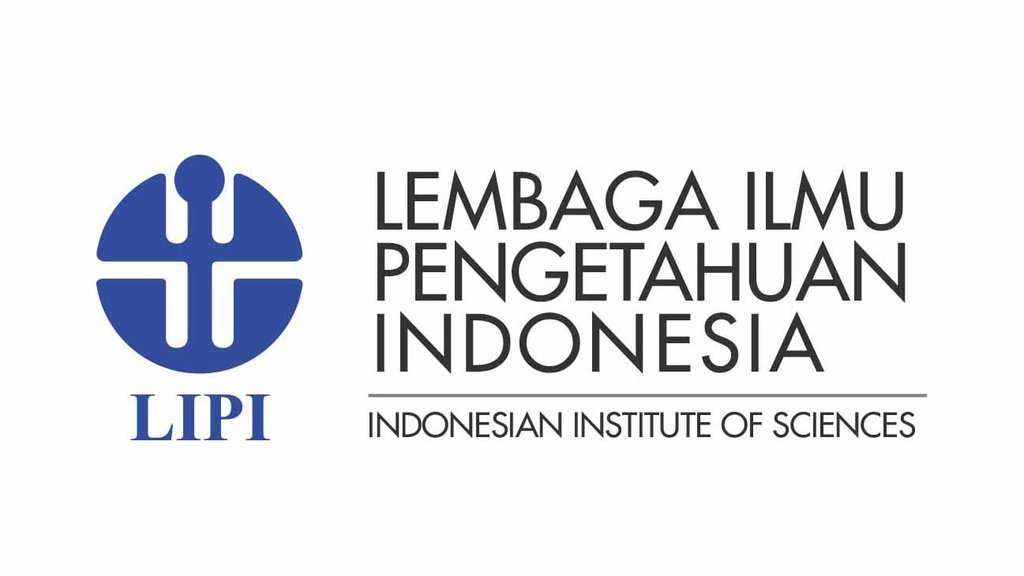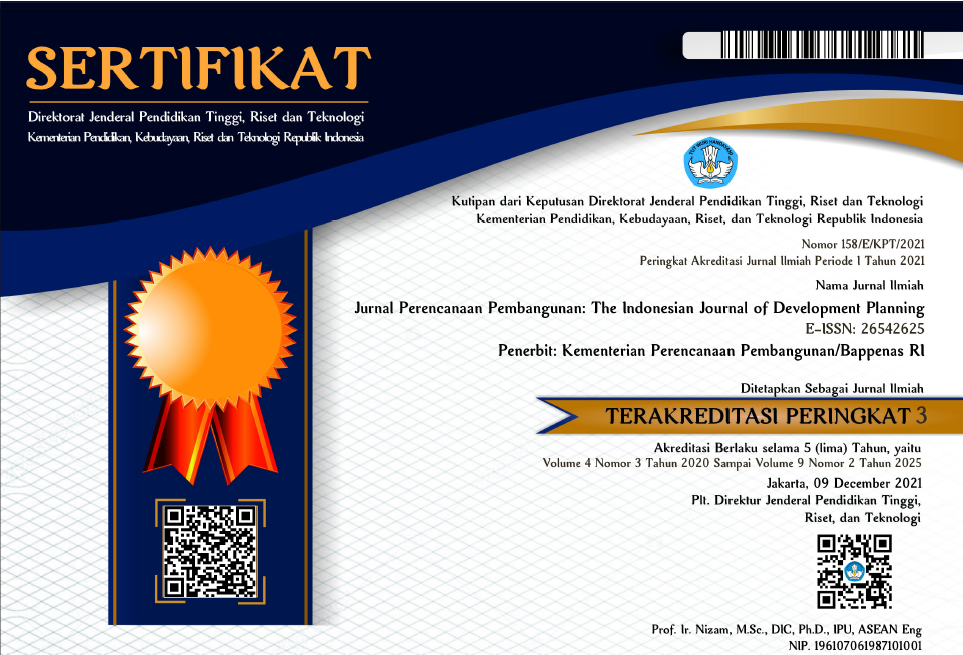Detertminants of CO2 Emission Intensity: Manufacturing Firm-Level Evidence in Indonesia
DOI:
https://doi.org/10.36574/jpp.v6i3.296Keywords:
fossil fuels, CO2 intensity, Indonesia, manufacturing, panel data, fixed effectAbstract
The Indonesian economy has improved with the manufacturing sector as its primary growth driver. However, along with this development, the country inevitably faces environmental issues such as increased carbon emissions. Based on the firm-level dataset from the Indonesian large and medium manufacturing sector, this paper investigates the main factors related to the CO2 emission intensity of manufacturing firms. The emission carbon data is obtained by calculating the fuel consumption of plants converted into carbon dioxide emissions using emission factors. The result shows that the trend of carbon emission had increased, but the carbon emission intensity had improved. Performing panel data framework, this study uses OLS, 2SLS, and fixed effect model in analyzing the determinants of CO2 intensity. The result of the FE regression suggests that larger firms are emission efficient compared to small-sized firms. Similarly, capital- and labor-intensive firms are less carbon-intensive. Furthermore, firms that spend more on maintenance have emitted more, perhaps due to the adoption of high maintenance equipment by emission-intensive firms requiring more expenses.
Downloads
References
Brucal, A., Javorcik, B., & Love, I. (2017). Pollution havens or halos? Evidence from foreign acquisitions in Indonesia. Retrieved April 15, 2021, from https://economicdynamics.org/meetpapers/2017/paper_306.pdf.
Bu, M., Li, S., & Jiang, L. (2019). Foreign direct investment and energy intensity in China: Firm-level evidence. Energy Economics, 80(2019), pp. 366-376.
Cameron A. C., & Trivedi, P. (2009). Microeconometrics using stata. Texas: Stata Press.
Cole, M. A., Elliott, R. J., & Shimamoto, K. (2005). Industrial characteristics, environmental regulations and air pollution: An analysis of the UK manufacturing sector. Journal of Enviromental Economics and Management, 50(1), pp. 121-143.
Cole, M. A., Elliott, R. J., & Strobl, E. (2008). The environmental performance of firms: The role of foreign ownership, training, and experience. Ecological Economics, 65(3), pp 538-546.
Cole, M. A., Elliott, R. J., Okubo, T., & Zhou, Y. (2013). The carbon dioxide emissions of firms: A spatial analysis. Journal of Enviromental Economics and Management, 65(2), pp. 290-309.
Eskeland, G. S., & Harrison, A. E. (2003). Moving to greener pastures? Multinational and the pollution haven hypothesis. Journal of Development Economics, 65(2), pp. 290-309.
Gordon, P. (2019). Revealed: the countries leading the way in renewable energy. Retrieved Juni 25, 2021, from www.smart-energy.com: https://www.smart-energy.com/renewable-energy/revealed-the-countries-leading-the-way-in-renewable-energy/
Hastuti, S. H., Hartono, D., Putranti, T. M., & Imansyah, M. H. (2020). The drivers of energy-related CO2 emission changes in Indonesia: Structural decomposition analysis. Enviromental Science and Pollution Research, 28, pp. 9965-9978.
Holladay, J. S. (2010). Are exporters mother nature's best friend? NYU School of Law. Job Market Paper. Retrieved April 4, 2021, from https://spot.colorado.edu/~kellerw/courses/9999f08/Holladay.pdf
Hwang , J. H., & Yoo, S. H. (2012). Energy consumption, CO2 emissions, and economic growth: Evidence from Indonesia. Qual Quant, Vol. 48, pp. 63-73.
Intergovernmental Panel on Climate Change. (2006). 2006 IPCC Guidelines for National Greenhouse Gas Inventories Volume 2: Energy. Hayama: Institute for Global Environmental Strategies (IGES). Retrieved March 1, 2021, from https://www.ipcc-nggip.iges.or.jp/public/2006gl/vol2.html.
Intergovernmental Panel on Climate Change. (2018). Global warming of 1.50C: Summary for Policymakers. Retrieved June 25, 2021, from https://www.ipcc.ch/sr15/.
International Energy Agency. (2017). CO2 emissions from fuel combustion 2017 - highlights International Energy Agency. Retrieved April 6, 2021, from https://euagenda.eu/upload/publications/untitled-110953-ea.pdf .
International Energy Agency. (2021). Global energy review 2021. Retrieved May 20, 2021, from https://www.iea.org/reports/global-energy-review-2021.f
Jiang, L., Lin, C., & Lin, P. (2014). The determinants of pollution levels: Firm-level evidence from chinese manufacturing. Journal of Comparative Economics, 42, pp. 118-142.
Kabir, M. N., Rahman, S., Rahman, M. A., & Anwar , M. (2021). Carbon emissions and default risk: International evidence from firm-level data. Economic Modelling, Vol. 103 (2021) 1055617.
Kuncoro, A. (2018). Trends in the manufacturing sector under the Jokowi presidency: Legacies of past administrations. Journal of Southeast Asian Economies, Vol. 35, No. 3, pp. 402-424.
Nuber, C., & Velte, P. (2021). Board gender diversity and carbon emissions: European evidence on curvilinear relationship and critical mass. Business Strategy and the Environment, Vol. 30, pp. 1958-1992.
Papadogonas, T., Mylonakis, J., & Georgopoulos, D. (2007). Energy consumption and firm characteristics in the Hellenic manufacturing sector. International Journal of Energy Technnoogy and Policy, 5(1), pp. 1958-1992.
Ramstetter, E. D., & Narjoko, D. (2014). Ownership and energy efficiency in Indonesian Manufacturing. Bulletin of Indonesian Economic Studies, 50(2), pp. 255-276.
Richter, P. M., & Schiersch, A. (2017). CO2 emission intensity and exporting: Evidence from firm-level data. European Economic Review, 98(2017, pp. 373-391.
Sahu, S. K., & Mehta, D. (2018). Determinants of energy and CO2 emission intensities: A study of manufacturing firms in india. The Singapore Economic Review, 63(2), oo. 389-407.
Sahu, S., & Narayanan, K. (2010). Determinants of energy intensity in Indian manufacturing industries: A firm level analysis. Skills Development for New Dynamism in Asian Developing Countries under Globalization. Retrieved April 20, 2021, from https://mpra.ub.uni-muenchen.de/21646/1/MPRA_paper_21646.pdf
Soytas, U., Sari, R., & Ewing, B. T. (2007). Energy consumption, income, and carbon emissions in the United States. Ecological Economics, 62, pp. 482-489.
Vo, A. T., Vo, D. H., & Thuong Le, Q. T. (2019). CO2 emissions, energy consumption, and economic growth: New evidence in the ASEAN countries. Journal of Risk and Financial Management, 12(3), 145.
World Bank. (2021). World Development Indicators. Retrieved April 17, 2021, from https://databank.worldbank.org/reports.aspx?source=2&series=NY.GDP.MKTP.CD&country=#.
World Health Organization. (2018). Climate change and health. Retrieved April 17, 2021, from https://www.who.int/news-room/fact-sheets/detail/climate-change-and-health.
Xie, H., Zhai, Q., Wang, W., Yu, J., Lu, F., & Chen, Q. (2018). Does intensive land use promote a reduction in carbon emissions? Evidence from the chinese industrial sector. Resources , Concervation, & Recycling, 137, pp. 167-176.
Downloads
Published
How to Cite
Issue
Section
License
This is an open-access article distributed under the terms of the Creative Commons Attribution-NonCommercial-ShareAlike 4.0 International License. Copyright © Kementerian PPN/Bappenas RI


















